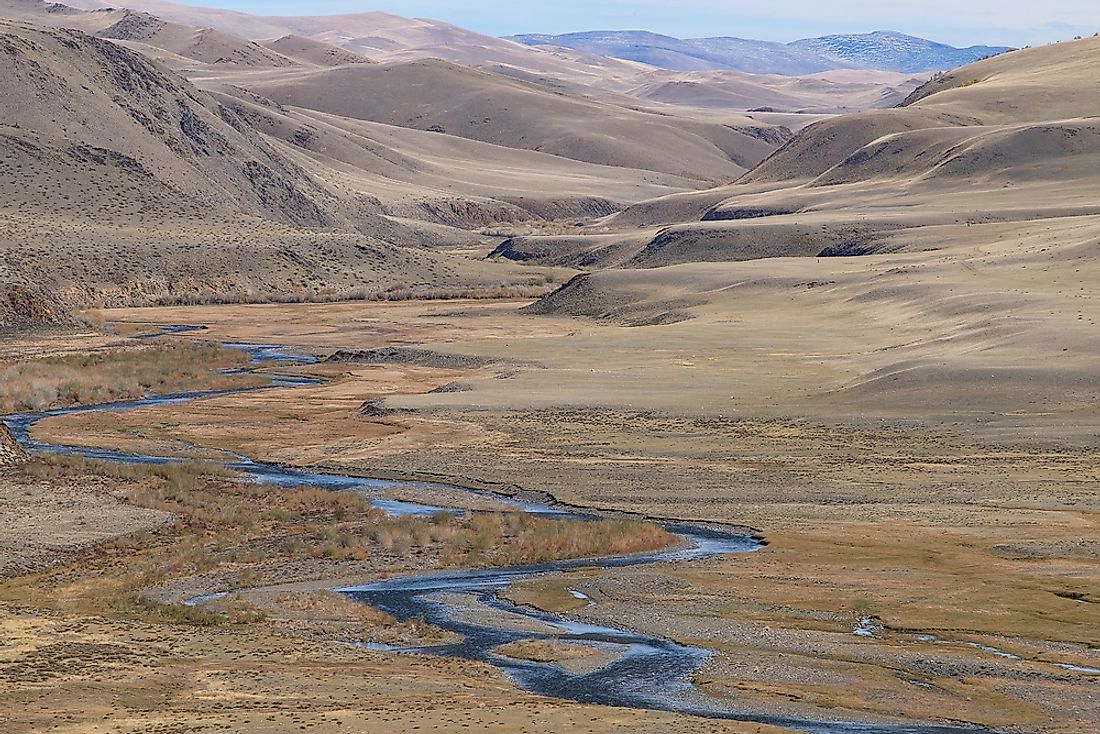What Is A Fluvial Terrace?

Fluvial terraces are step-like features seen on the banks of rivers, some of which are more than 100 feet in height. These terraces are formed as result of the continuous deposition and erosion of sediments by the river. A river in areas that experience glaciations is most likely to develop fluvial terraces. These terraces are classified into two main groups, which are fill and strath fluvial terraces; and paired and unpaired fluvial terraces. Under the fill, terraces are cut and nested fill fluvial terraces subdivisions.
Fill and Strath Terraces
Fill terraces are fluvial terraces that can be seen in river valleys filled with sediments caused either by glaciations or an increase in bed load. The flow of the river will continue depositing the material in the valley until it reaches equillibrium, upon which any additional material is transported downstream by the river water. The balance is not permanent, and with time, the deposited sediment in the terrace can be eroded away, caused by an increased flow of water. Ultimately, the river valley results in a step-like appearance, where the top-most “steps” usually fill terraces. Strath fluvial terraces are formed as a result of extensive erosion on the bedrock of the river. Over time, the river valley expands in width, and a change in the rate of erosion caused by the change in hardness of the bedrock, or in the flow of the water results in the formation of strath terraces.
Cut and Nested Fill Terraces
Fill fluvial terraces are subdivided into cut terraces and nested fill terraces. Cut terraces are formed after constant changes in water flow in the river, causing erosion of the river valley. The eroded sediment exposes cut terraces. On the flipside are nested fill terraces which are formed after the eroded alluvium is deposited in a valley, but increased water flow erodes away the deposited sediment. The exposed valley is later filled with sediment again but at a lower level and resulting in the formation of a nested fill terrace. The main difference between nested fill and cut terraces is that cut terraces are formed as a result of erosion of sediment while nested fill terraces are created through deposition of sediments.
Paired and Unpaired Terraces
Paired and unpaired terraces are defined by the appearance of the river valleys after extensive erosion brought about by the water. These two types of terraces are based on the elevation of the river banks. Paired terraces are generally as a result of rejuvenation of a river, and are seen where the river waters equally erode both sides of the terrace so that the two terraces are of equal height. On the end of the spectrum are unpaired terraces which appear when an underlying hard material resists erosion from the river, leaving a single terrace.
Uses of Fluvial Terraces
Terraces have numerous applications. Fluvial terraces show the history of the flow rate of the river and offer a glimpse into the history of the river. The most common use of fluvial terraces is in the measurement of water levels in a river and to assess the down-cutting effects of the river flow.











